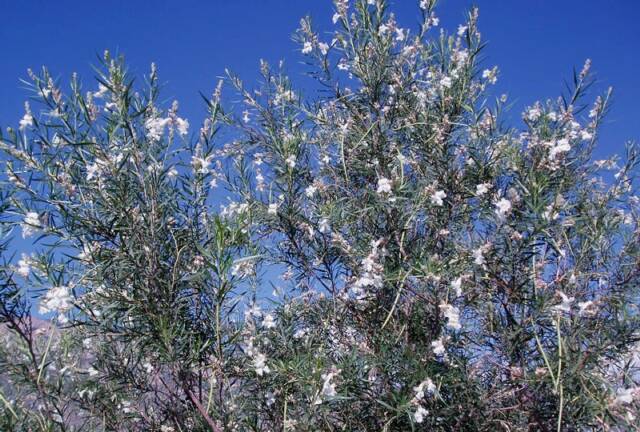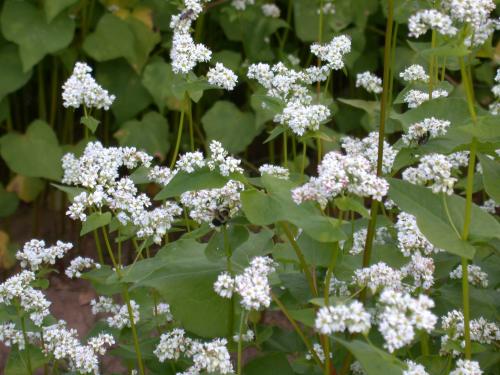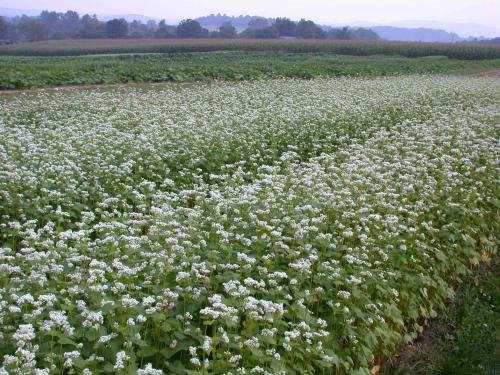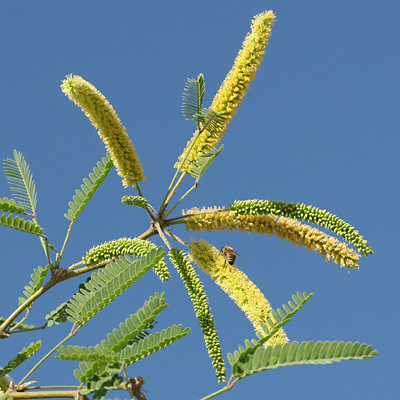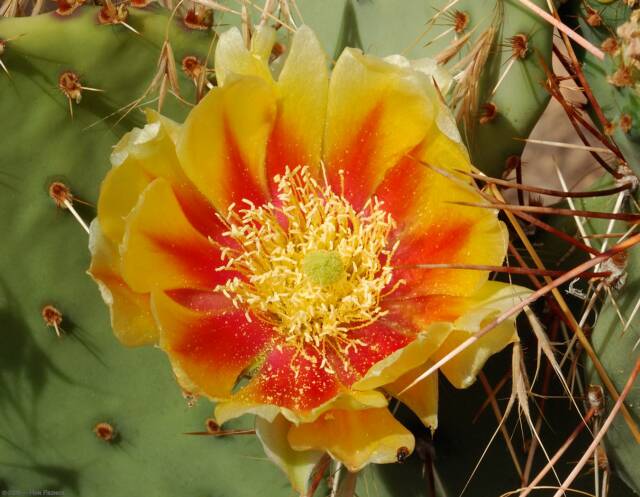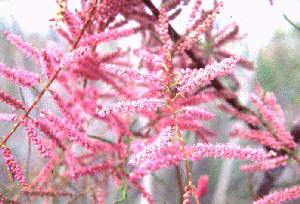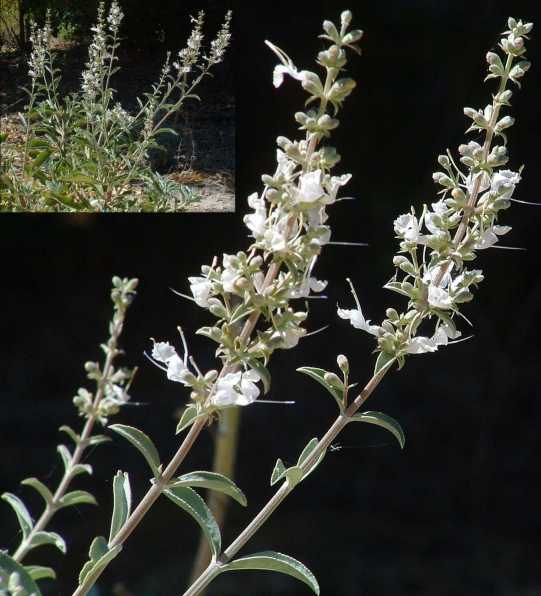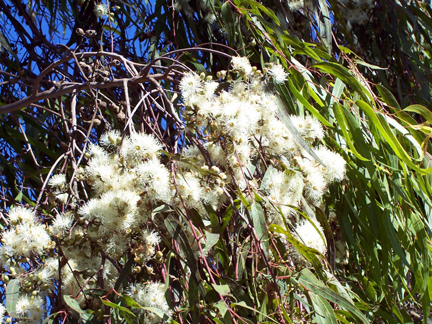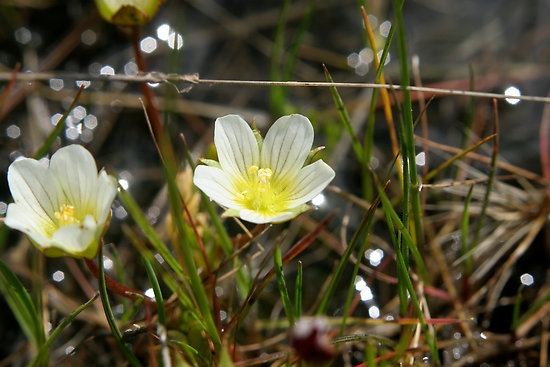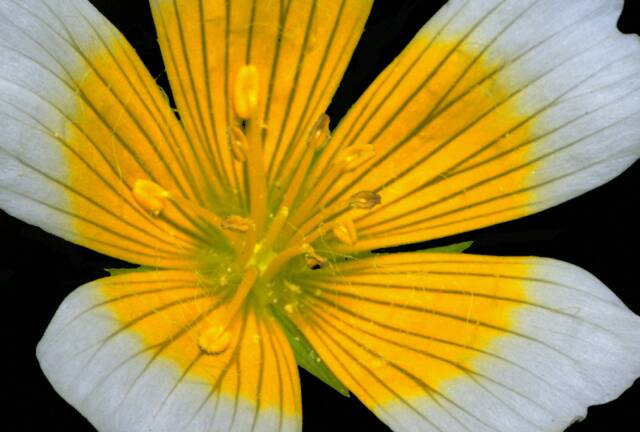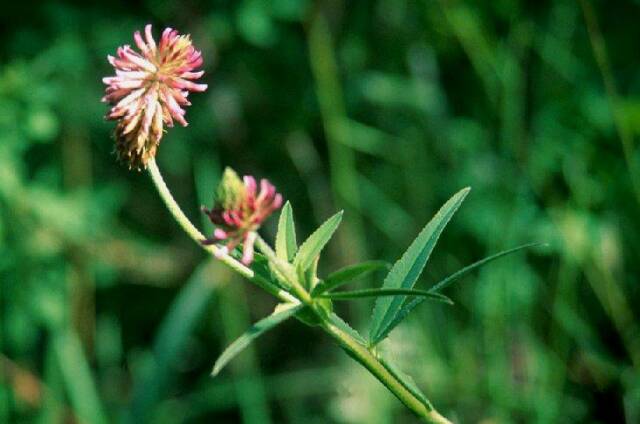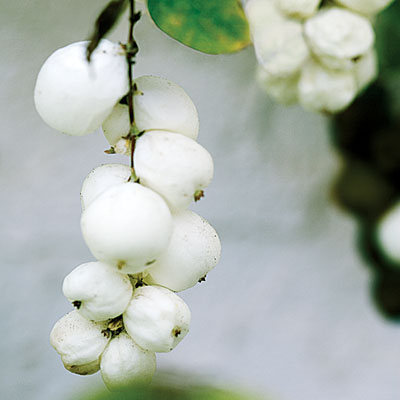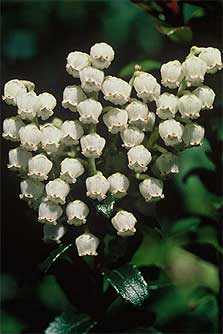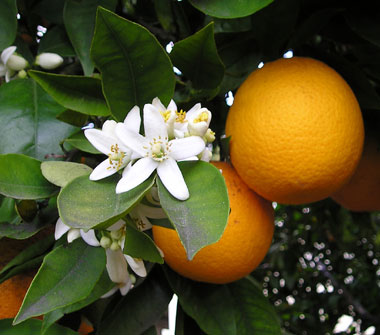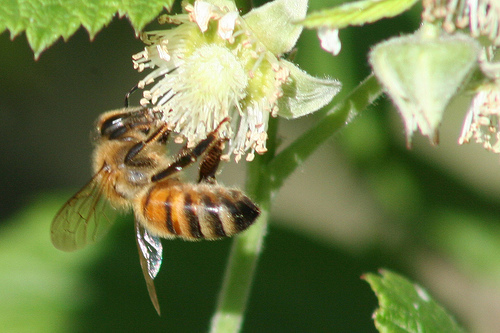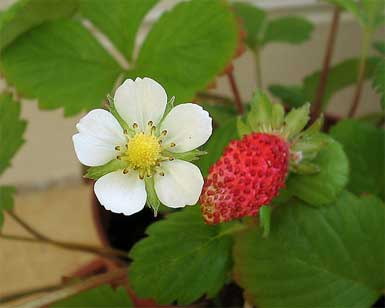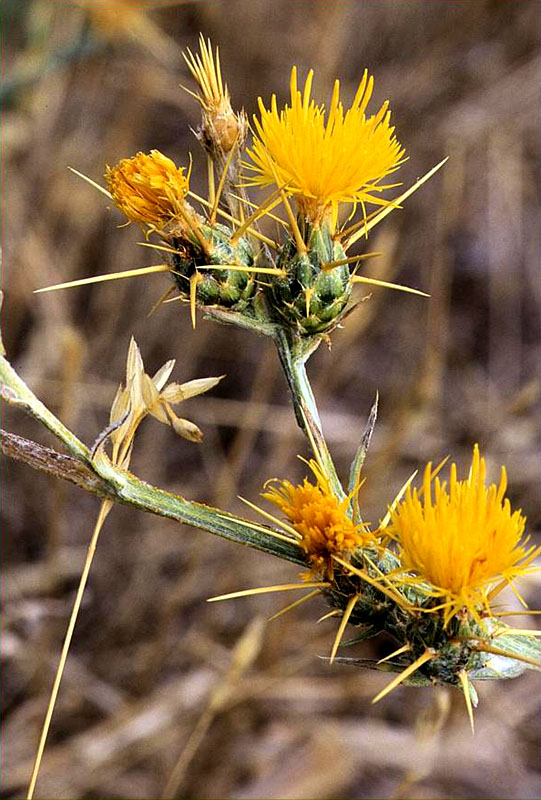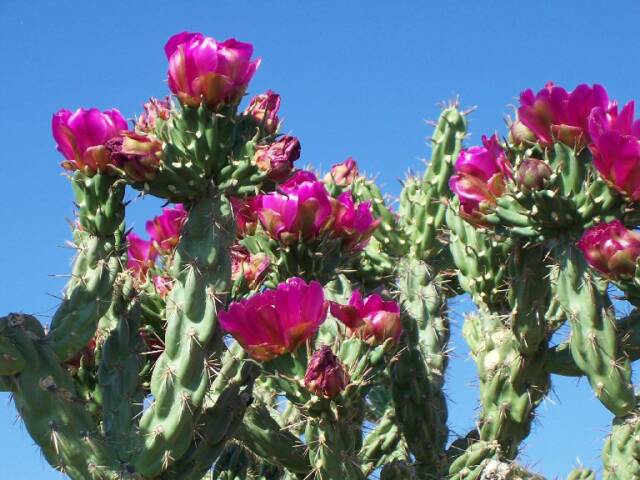A honey plant may be defined as a common plant which secretes nectar accessible to honeybees in quantities sufficiently large enough to be of importance to beekeepers.
They belong to widely separated families; including herbs, shrubs and trees, native and exotic species, and wild and cultivated plants.
Raw honey varies greatly in color, density, flavor, and viscosity based on determining factors in the flower nectar.
Below are images and descriptions of plants that have helped make
Bee Chama Honey.
VARIETAL HONEY PLANTS:
Alfalfa Wildflower Honey
(Plant origin, New Mexico)
The Alfalfa fields in the Rio Grande River Valley are small in comparison to most and broken by many ditch systems and roads. This allows for many different wild flower nectars to be mixed into alfalfa nectar collected by the bees. Depending on exactly which bee yard the honey is harvested from it may also contain Desert Marigold, Tamarisk, Willow, Russian Olive, or Sage. This wildflower honey has a very traditional honey flavor and is wonderfully diverse. Great for teas, baking & cooking, dressings, glazes and more.
Buckwheat Honey
(Plant origin, Washington)
This is the darkest variety we have available. Considered to be the highest in anti-oxidants & mineral contents of all honeys produced in the states, this variety of buckwheat is produced in Washington state and strongly resembles the smells and tastes of a farm. If you like the taste of molasses, you will love this stout honey. Super good with butter & biscuits!
Cat's Claw/Mesquite Honey
(Plant origin, New Mexico/Arizona)
This variety has the widest variation from season to season. It depends greatly on the amount of rainfall early in the spring in Southern New Mexico. Less rain in the spring makes for lighter purer harvests of mesquite. Cat's Claw acacia has flowers in yellow, cylindrical spikes. The flowers and leaves of this plant resemble mesquite, but Cats Claw thorns are like rose thorns, broad at the base and curved backward while mesquite thorns are straight. The seed pods of the Cat's Claw split upon maturing. Mesquite pods do not.
Cats Claw/Mesquite is an Acacia honey of the Southwest with a mild flavor and buttery consistency that greets the senses gently and is wonderful on toast or in tea. Try it on a brownie or chocolate cake as a substitute for frosting and you'll be amazed.
Carrot Honey
(Plant origin, Oregon)
A very earthy tone that has quite a bite to it...we consider this a dark & sweet combination that has a very unique, complexity to it. Carrot crops are perennial and seeds are saved in the second year. YES, carrots do have flowers if allowed to bloom.
This honey might be rich in beta-carotenes and minerals, since it's coming from a root vegetable, but regardless it's a very rare honey, and quite different from the rest. The dark color and earthy flavor make it great for baking and a sweet compliment to morning toast.
Desert Wildflower Honey
(Plant origin, New Mexico & Sonoran Desert)
Our dark, rich, robust desert honey is unbeatable to those with a taste for strong honeys. THIS IS OUR BEST SELLER!!
The natural blend of wildflowers ranges from tamarisk, salt cedar & mesquite tree blossoms to cactus flowers. The predominant nectar is tamarisk and has a pungent after-taste. It's great in coffee & black tea and wonderful drizzled over corn bread with butter. The bees are foraging on pesticide-free desert flowers. Still one of our BEST SELLING honeys of the Southwest. Many people claim this is the honey that they remember from childhood.
Sage/Willow
(Plant origin, New Mexico)
One of our lightest, most mild desert honeys the Sage/Willow variety is usually harvested in the fall months in limited extractions. The arroyos are full of desert willow trees and the hills are covered with sage. This is a favorite of local New Mexicans who were fond of the Desert Marigold, also a mild desert honey that has been in very limited production for the last few years. Light enough for green teas and herbals, there is little to no after-taste with Sage honey. Excellent for anyone living in desert regions suffering from allergies.
Eucalyptus Honey
(Plant origin, California)
A deep to medium dark honey variety from the ubiquitous Eucalyptus trees on the west coast. This is a unique variety and has a strong medicinal use for chest colds and infections. Those with asthma may find this honey soothing. The flavor is waxy and mild, not at all minty like one might think of Euclyptus. Try it and you'll find out why we like it.
Meadowfoam Honey
(Plant origin, Oregon)
Meadow foam is grown for its seed oil which is used in the cosmetic industry. It is a rare find in a honey crop in the United States. This delicate honey from Oregon is very light and sweet, some say it tastes like marshmallows and vanilla. It's one of our 'dessert honeys' because it's amazing drizzled on plain yogurt with fresh fruit.
Melon Honey
(Plant origin, California)
A new summer honey from the west coast with a sweet yet mild flavor. Bees are working on fields of cantaloupe crops making this tasty treat. Blooms from the melon plants become the fruit itself. This is a sun loving crop with nectar that is sweet as sugar.
Mountain Wildflower
(Plant origin, Colorado, New Mexico)
Mountain wildflower honey is a natural blend of wildflowers from the mountain regions of Northern New Mexico and Southern Colorado. It is a light floral honey with a sweet flavor. During the best seasons this honey is predominantly mountain clover. Mountain wildflower is produced at 8,000 ft and is a delicate, mild honey that turns anything into a treat. Our spring harvest is the palest yellow with fall harvests yielding floral nectars that produce a rich, golden honey with more Snowberry nectar. This honey crystallizes with very fine grains into an almost whipped butter. Yummy spread over toast with your favorite nut butter!
Orange Blossom Honey
(Plant origin, California/Arizona)
This is light and crisp with a deep citrus flavor. Orange trees generally range in height at maturity from 22 to 30 feet. Leaves are dark green, pointed with a round base and from 3 to 5 inches in length. The blossoms are a delicate white.
Orange blossom are native to the west coast and southwest, offering an exquisite flora bouquet of flavor that is excellent in plain yogurt or any tea.
Mountain Gamble Oak Honey
(Plant origin, New Mexico/Colorado)
This is not a true flower nectar honey. It is a honey dew honey. It is a by-product of aphid infestations on gamble oak groves in Northern New Mexico. During times of extreme drought the bees have no choice but to collect it. Its woody flavor is like no other honey and it is slower to crystallize than most floral honeys. This is a rare honey, happening only every 6-10 years. It's also the beekeeper's favorite, so trust his intuition.
Strawberry/Raspberry Honey
(Plant origin, California)
Raspberry honey is a very sweet, highly acidic honey from California. It makes a wonderful syrup substitute with a slightly fruity finish. Super good on pancakes & waffles!
Strawberry / Raspberry of the South Valley in California is a sweet and fruity blend with a robust finish. A favorite of both young and old, this classic berry honey is a delight to add to your honey collection. The bees tend to work harder on the raspberry plants making this a rich, reddish color. Much less sweet than the Wild Blackberry variety.
.Wild Blackberry Honey
(Plant origin, Washington)
Wild crafted blackberry honey from Washington State has a more distinct berry taste and fruitier flavor than our strawberry/raspberry honey. This is a very sweet honey! One of our dessert varieties best to be used sparingly. Wild Blackberry plants grow in huge abundance in the pacific northwest, making this a common honey for folks from that region. For the rest of us desert dwellers, this berry honey is a real treat. Imagine walking streets lined with blackberry plants, picking and eating as you go.
Wild Mint Honey
(Plant origin, Montana/Oregon)
A very dark, stout honey variety from the northwest. There is a distinct minty after-taste to this honey. Easily making it a favorite for those of you who like peppermint/spearmint teas. A soothing honey for the stomach.This is a limited select and may only be available while our current supply lasts. It seems to have attracted mead makers for some reason.
Star Thistle Honey
(Plant origin, California)
A rich, buttery honey that is on the darker side. This wild crafted honey from northern California comes from a noxious weed that many people love to hate. An old fashioned honey flavor with a smoother finish than the dark, Desert Wildflower. Introduced from southern Europe and the Mediterranean region in the mid-1800s, Star Thistle is a serious rangeland weed throughout the western United States. As invasive as this plant is, the honey is to die for! It definitely makes the top five best on the Bee Chama Honey line-up. We have a very limited supply and only pack it in 1/2 pint jars.


